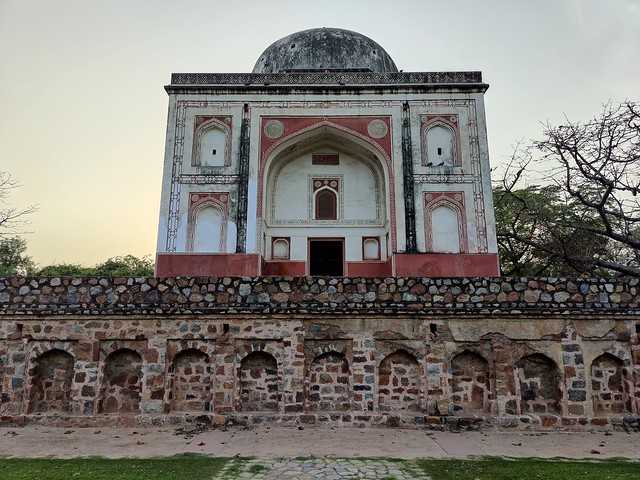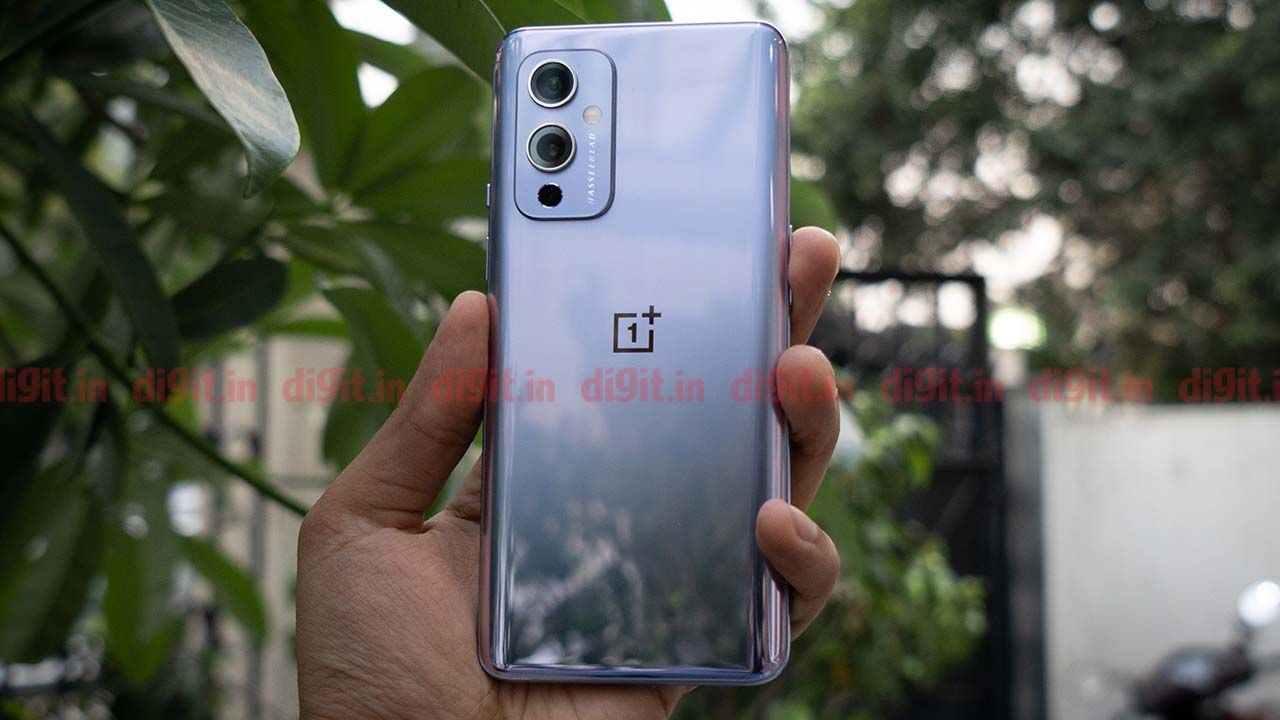
The OnePlus 9 is finally here. Launched alongside the OnePlus 9 Pro, this latest upper mid-range flagship from the company is one of the most anticipated devices from the company this year. And, as such, there’s already a lot of interest in it.
While the OnePlus 9 Pro and OnePlus 9R will fight in segments that still remain untamed for the company, the OnePlus 9 shoulders the responsibility of maintaining OnePlus’ dominance in a segment that it has been the king of for a few years now. However, with the competition heating up, the road ahead for the OnePlus 9 will be more difficult than it has been for most of its predecessors.
Yet, it’ll also have the unique advantage of using the learning gained from the previous generation OnePlus devices. But will it be enough? Will the OnePlus 9 emerge victorious in the days to come? Well, that’s something only time can tell. For now, we can take a deeper look at the device to help you with your buying decision. So read on for our full review of the OnePlus 9.
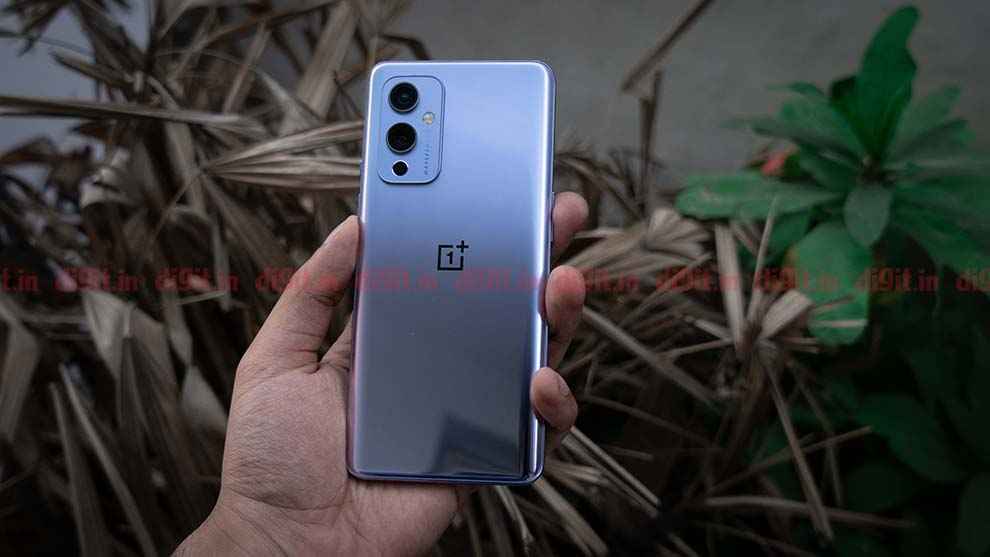
(Photo credit: Prateek Khatri/Digit)
OnePlus 9 review: Design
To begin with, let’s start with the design of the OnePlus 9. The basic element used for the machining of the phone is glass. The company sent us the Winter Mist colour for review which uses an unspecified version of Gorilla Glass sheet to protect the gradient effect flaunting glass back.
The back panel features very little in terms of distractions, with OnePlus deciding to go for a clean and simple look. The glossy gradient finish is complemented by the OnePlus logo plastered in the middle of the panel and the vertically placed triple camera module that despite protruding a little only ends up adding to the design value of the device.

(Photo credit: Prateek Khatri/Digit)
Much like the OnePlus 8 and 8T phones, the OnePlus 9 is also built using the company’s burden-free design language. As such, you have sleek curves on the back to improve the ergonomics and in-hand feel of the device. OnePlus has also used a reinforced fiberglass polymer frame, instead of metal to keep the weight of the phone in check. However, to OnePlus’ credit, because of the use of a new metallization process, the finish on the frame feels more like metal, than plastic.
The frame also houses all the buttons and ports, with the alert slider and the power button placed on the right of the device. The volume rocker is placed at the opposite side, with the SIM tray, Type-C jack, and the speaker grille all placed on the bottom end of the frame.
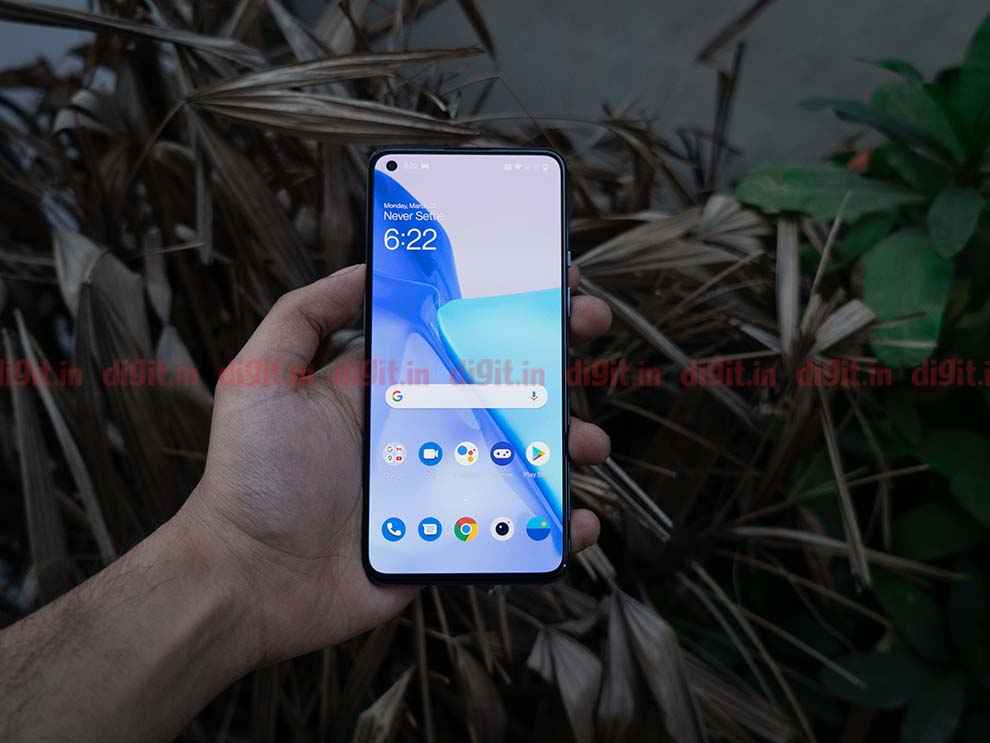
(Photo credit: Prateek Khatri/Digit)
OnePlus 9 review: Display
Moving on to the front, the display is one of the biggest talking points of the OnePlus 9, with the phone using a 6.55-inch AMOLED panel. The panel can process visuals in up to Full HD+ resolution and at a decent enough pixel density of 402ppi.
As has been the case with OnePlus phones in the recent past, the OnePlus 9’s display also supports high refresh rates — 120Hz to be precise. However, it’s not an adaptive display so the phone can be set to work at either 120Hz or 60Hz refresh rate. As such, we noticed a steep increase in battery drain when the phone was set to process visuals at a fast refresh rate.
OnePlus 9’s panel has been given the DisplayMate A+ rating which generally translates to pretty much the best visual experiences you can achieve on a smartphone display. Is that the case for the OnePlus 9 also? Well, the answer is a yes.
This HDR10+ display on the OnePlus 9 is equally good for playing games as it is for watching movies and streaming shows on the go. The expansive display is tuned for accurate colours and as such is a treat for consuming multimedia content on it. It’s super slick when set to work on the fast refresh mode, making UI animations and supported games feel an absolute delight.

Calman ColorChecker Analysis (sRGB)
Interestingly, this observation was also backed by the results of the tests we ran to test the OnePlus 9’s display. Calman’s display analysis showed the phone’s panel to be extremely colour accurate across both sRGB and HDR colour profiles. For the former, the phone managed to keep the colour accuracy error to very low levels — average deltaE of 0.9 and a maximum deltaE of 2.2– and even impressed with the results of the tricky DCI-P3 colour profile — average deltaE of 2 and a maximum deltaE of 2.8.
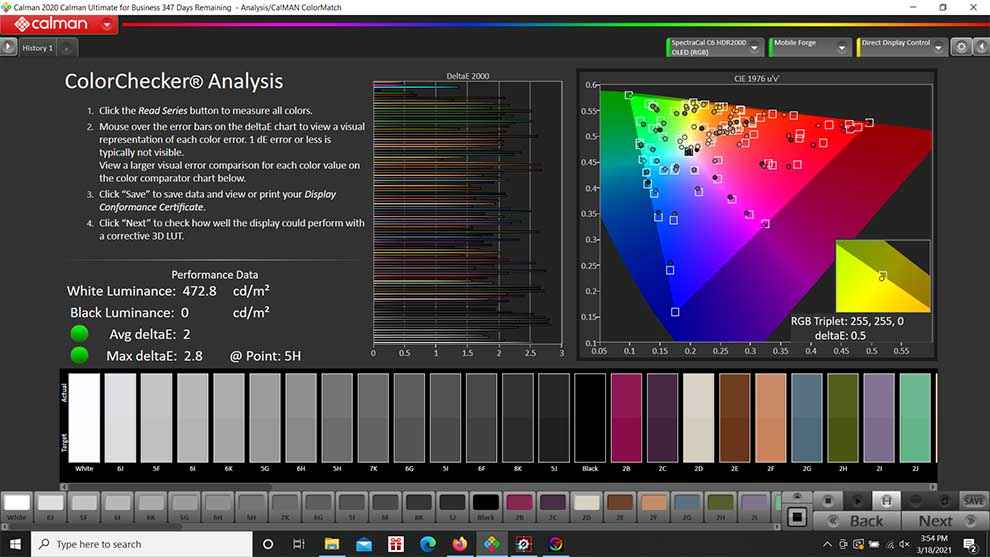
Calman ColorChecker Analysis (HDR)
In terms of its range, the OnePlus 9’s display was once again among the best we’ve tested so far. Testing it in the sRGB colour profile, the display managed to cover 99.172% of the BT.709, 66.465% of the DCI-P3 and 44.959% of the BT2020 colour gamuts. Set to the more vibrant HDR colour profile, the display managed to hit even more colours as it covered well over 100% of the BT.709 colour space, and a very good 96.75% of the DCI-P3 gamut.
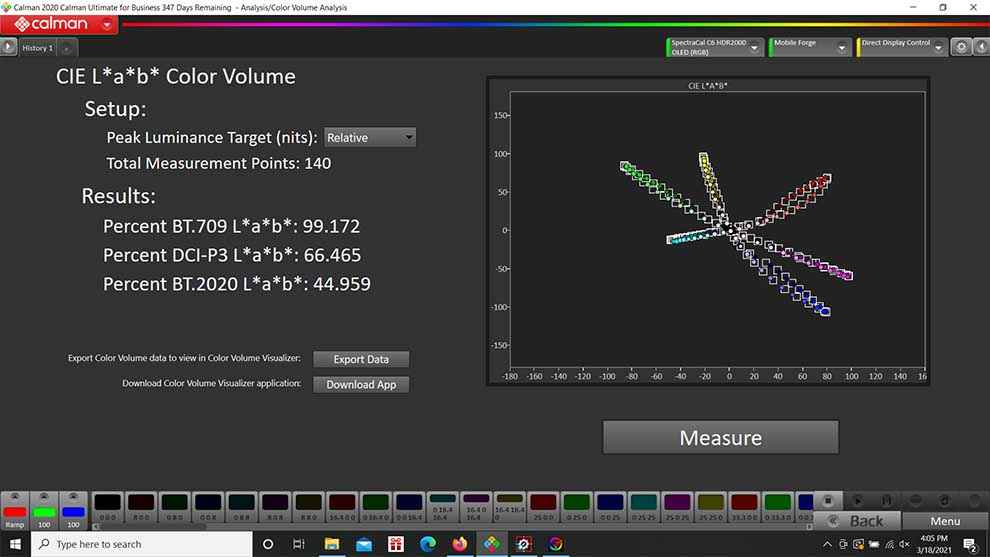
Calman Colour Volume test (sRGB)

Calman Colour Volume (HDR)
OnePlus 9’s display is claimed to reach high levels of peak brightness while watching HDR content. The company claims the AMOLED panel can reach 1100nits of peak brightness. While this can only be achieved on certain areas of the display and that too only while watching HDR content, we found the panel to achieve good peak brightness even during normal use — 767nits. Our tests showed the panel can also get very dark and drop down to a minimum brightness of 4nits.
OnePlus 9 review: Specifications and performance
Underneath the display, the OnePlus 9 hides some really interesting hardware to ensure it can handle anything and everything you throw at it. This is because the latest OnePlus 9 device brings with itself only the most powerful hardware that can be found on an Android smartphone at the moment.
At the heart of the device is Qualcomm’s top-of-the-line Snapdragon 888 SoC paired to as much as 12GB RAM and 256GB of fast UFS 3.1 storage. This chipset is the successor to the Snapdragon 865-series chipsets from last year. However, it’s built using a more advanced fabrication process which helps it pack a significantly greater number of transistors on the silicon.
Qualcomm claims this chipset brings significant gains in both CPU and GPU performance, all while being more power-efficient than before. For the former, we have Qualcomm’s 3-tier Kryo 680 CPU cluster, which consists of one Cortex-X1 core clocked at 2.84GHz, three slightly slower, but still quite powerful, Cortex-A78 cores clocked at 2.4GHz, and finally, four low power Cortex-A55 cores running at 1.8GHz.
Working in tandem, these cores help the Snapdragon 888 chip achieve a 25 per cent uptick in CPU performance over the previous generation. For graphics, the chipset houses an Adreno 660 GPU, which again claims to offer a 35 per cent increase in performance over last year’s Adreno 650 GPU when it comes to graphics rendering.
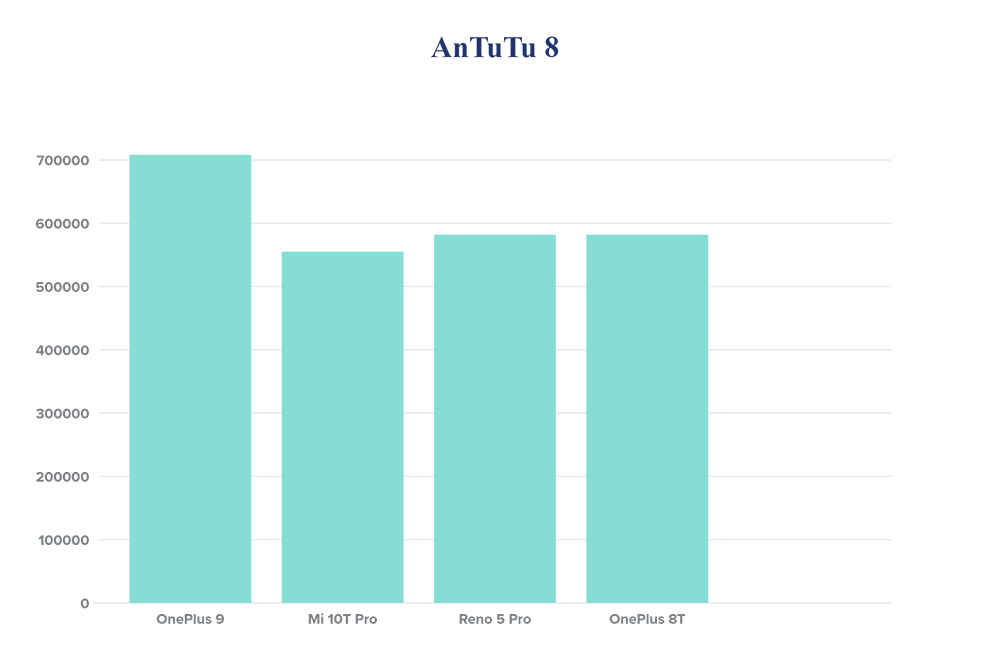
The chipset also packs Qualcomm’s Snapdragon X60 5G modem to deliver 5G connectivity across global networks and Qualcomm Spectra 580 ISP for handling cameras. Qualcomm claims that the latter is 35% faster than the previous generation imaging processors, and also uses a new low-light architecture to help cameras capture brighter images in dark environments.
But we’ll discuss the camera performance later. For now, let’s take a look at how the core hardware handles apps of daily use, synthetic benchmarks, and yes, games. OnePlus sent us the 12GB RAM and 256GB storage variant for review. Running a copy of Oxygen OS 11 — based on Android 11 — our review unit of the OnePlus 9 worked as expected, and gave us very little to complain about.
Outside the realm of synthetic benchmarks, the general performance of the OnePlus 9 is good. The device handles heavy-duty games — including Call of Duty: Mobile and Asphalt 9 Legends — as well as handles apps of daily use such as Facebook, Amazon and Instagram. The phone’s 120Hz display working in tandem with the powerful chipset and high amount of RAM — which the system can also improve virtually by allocating a chunk of ROM for system processes — also helps improve the gaming experience on the phone, making the phone feel fast, and responsive.
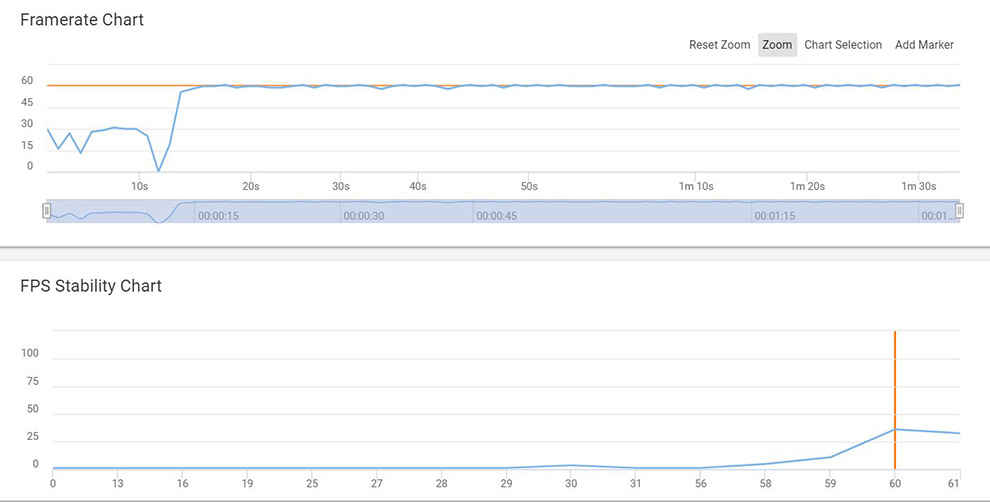
Call of Duty Mobile: Median FPS and stability
The power of the device’s flagship-grade hardware was also visible when we tested it using our suite of benchmark tests. To begin with, the OnePlus 9 clocked an impressive score of 708100 points on AnTuTu 8.0, and also scored a very good 1125 points and 3629 points respectively in the single-core and multi-core tests of Geekbench 5. It also impressed when tested using 3DMark Wildlife — a score of 5682 points — and GfxBench.
For gaming, we tested the device using our trusted Gamebench service and the results were in line with what we had expected. We tested Call of Duty Mobile and Asphalt 9 Legends at the highest possible graphics settings, and the former managed to reach a median FPS of 60 with a stability of 86 per cent. Asphalt 9 Legends clocked ran at a median FPS of 59 frames at stability of 98 per cent. These are pretty good results, and as such, translating to stable and good gameplay at the highest possible graphics settings on the device.

(Photo credit: Prateek Khatri/Digit)
OnePlus 9 review: Cameras
Moving to the camera department, there’s a lot to digest here about the OnePlus 9. Unlike the OnePlus 9 Pro, this one comes with a three-lens module at the back which comes with the Hasselblad branding. However, the lenses populating the module have not been developed in partnership with the Swedish camera manufacturer. Instead, with the OnePlus 9, the partnership sees Hasselblad provide camera tuning inputs to help the OnePlus 9 output more “life-like” colours. Do note that the below samples have been resized for web and that you can see the original, full-resolution JPG files in our Flickr Gallery.
At the heart of the set-up is a primary 48-megapixel Sony IMX689 sensor with an F/1.8 aperture. This is sat next to a 50-megapixel ultra-wide IMX766 lens with an F/2.2 aperture and a third 2-megapixel monochrome lens for adding extra detail to portrait shots.


OnePlus claims the above-mentioned lenses working in tandem with the Hasselband tuned camera software helps the OnePlus 9 take a “giant leap forward in mobile photography.” However, as we found out, this appears to be more of a giant marketing claim than anything else.
While the overall camera performance of the device is good, it’s still not out of the ordinary. The primary lens captures decent day-time shots. When fed with a good amount of light, this lens clicks some really well-detailed pictures. The pictures clicked using the main camera also show the good dynamic range and colour accuracy to help the phone take on the competition in the segment.


With the OnePlus 9, the company has also vastly improved the ultra-wide capabilities of the camera set-up. This mostly because of the presence of powerful hardware in the form of the 50-megapixel Sony IMX766 sensor. This is a curved freeform lens that greatly reduces edge-distortion in ultra-wide images to improve the end result. And, because of its high megapixel count, the lens also manages to capture images with a decent amount of detail and very little noise.
The phone also uses this lens to click super macro shots from as close as 4 cm away from the subject. During our review, we found the lens to also be good at clicking macro shots, with such pictures coming out with rich detail and good depth effect.


Both the primary and ultra-wide lens also offer good low-light performance, which appears to be marginally better than what we saw on the previous generation OnePlus devices. The Nightscape mode’s performance also appears to have gone up a bit, with the computational photography algorithms providing good results even in very low-light scenarios. The mode brings the overall low-light performance of the OnePlus to a more than satisfactory level and is generally fast and responsive.
However, that’s not the case for the overall camera experience of the device. On the software side of things, there still appear to be a few bugs, with the phone’s camera software feeling a little sluggish at times. While the phone offers good shutter speed, the tap response for clicking pictures from the software side is a little delayed — something that can be an issue if you are trying to click a burst of quick shots.

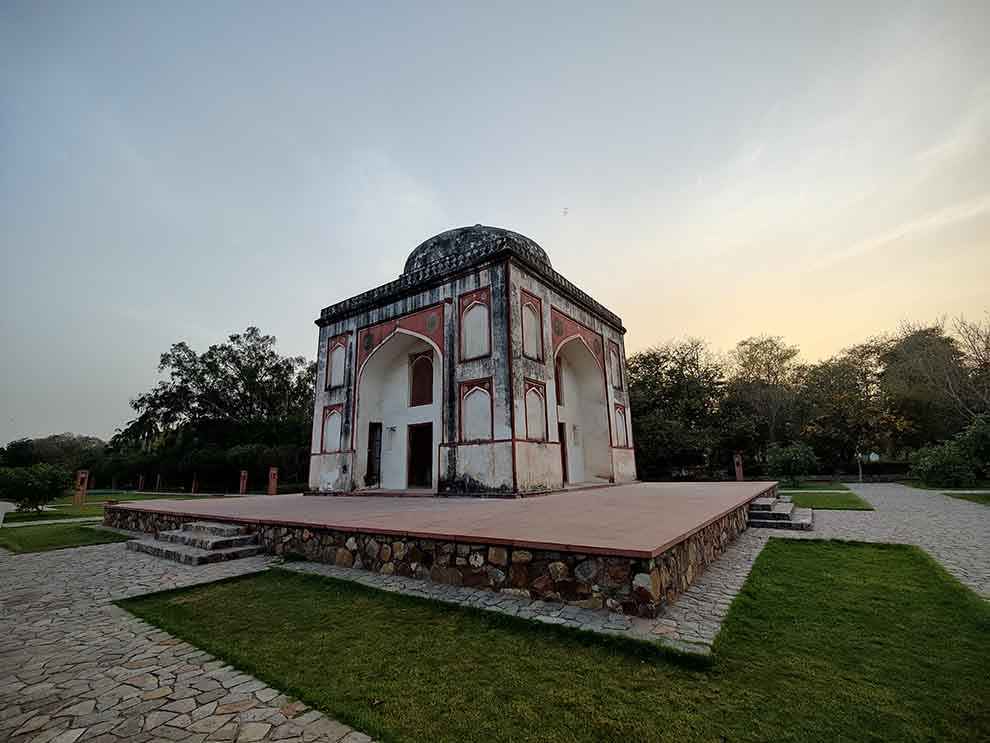
Apart from this, the other major thing of note about the OnePlus 9 photography experience is the presence of a standalone Hasselblad Pro Mode. Under this mode, OnePlus provides an interesting UI and a number of advanced options to test out your photography skills. Based on Hasselblad’s image processing software, this mode gives users the ability to manually adjust ISO, exposure time, white balance, focus and more. Additionally, there’s also the option to capture 12-bit RAW images for improved details, colour and higher dynamic range.
OnePlus 9 review: Battery
Keeping the lights on the device is a big 4500mAh battery pack on the device which promises good battery life. As a daily driver, the OnePlus 9’s battery should be big enough to get most users through the day. In fact, light to moderate users may even get more than a day’s worth of use on a single charge from the device.
As found during our review, the OnePlus 9 managed to last over 14 hours in our video loop test and also handled gaming well by recording a battery drain of 24 per cent after an hour-long session of Call of Duty: Mobile. And even when the phone does run out of charge, it’s not really a problem as the phone supports the company’s Warp Charge 65T. This enables it to complete a full charge using the phone’s included 65W charger in around 60 minutes. However, what’s more interesting is the fact that the first 50 per cent of the battery can be charged in just 16 minutes.
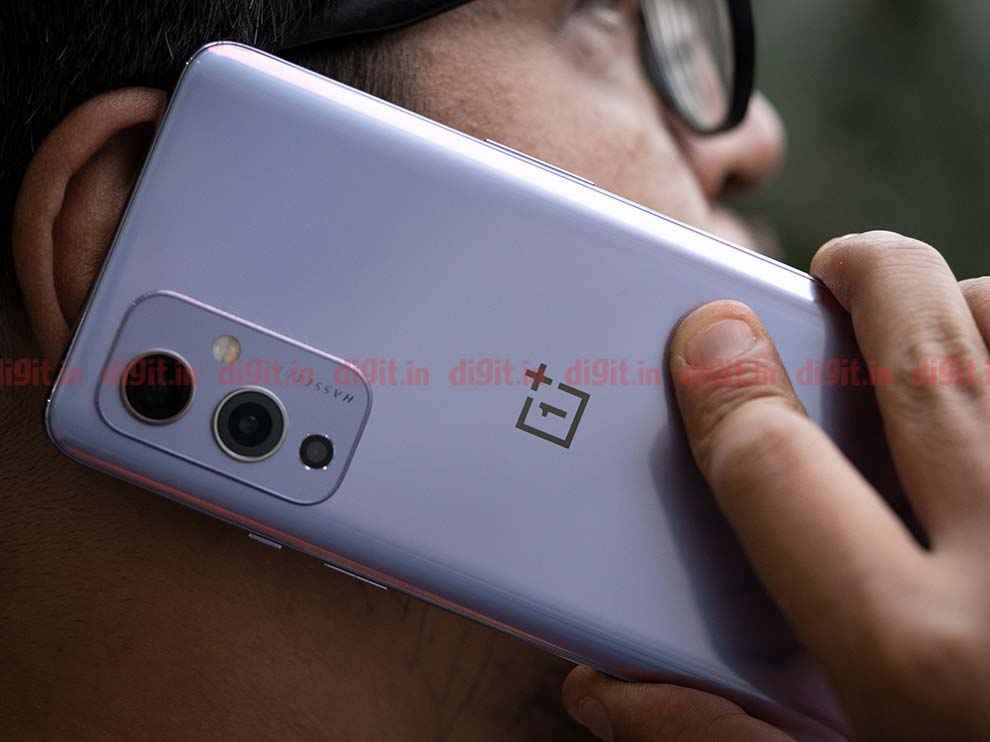
(Photo credit: Prateek Khatri/Digit)
OnePlus 9: Conclusion
Sandwiched between the OnePlus 9 Pro and the OnePlus 9R, the OnePlus 9 appears to be a very different proposition from its predecessors. Unlike the OnePlus 8 — and also the OnePlus 8T — the OnePlus 9 does not simply play second fiddle to the more expensive Pro OnePlus device. Instead, it now exists as the middle-child, attempting to strike a fine balance between price and premium features. This step-up in positioning has also seen the OnePlus 9 launch at a significantly higher price point than what we saw for the vanilla variants up until last year.
Starting at Rs 49,999 for the 8GB+128GB variant, with the 12GB RAM+256GB storage one going up to Rs 54,999, the OnePlus 9 is now a premium flagship that demands greater scrutiny than ever before. As a consequence of its price, the OnePlus 9 will now also face far greater competition than previous generation non-pro OnePlus phones. While it’s too early to say how it’ll fare against the competition, we can definitely comment on the OnePlus 9’s credentials as a smartphone in isolation of the prevailing market conditions.
In our time with the phone, we found the OnePlus 9 to be an extremely well-rounded device. From display to performance and even cameras, there’s plenty to like about the OnePlus 9 as the phone covers pretty much all bases, and generally lives up to the tall claims made by the marketing folks at OnePlus. It almost hits all the right notes, and as such, should be good for pretty all users. So, if you are in the market for a new phone, or want to upgrade from your old OnePlus to a new one, the OnePlus 9 should definitely be getting your consideration.
[ad_2]
Source link

